A review of the best tools for cleaning wells and how to use them
The fact that there is a well on your site is not a guarantee of an uninterrupted supply of quality water.
Agree, like any structure, it requires care and cleaning, otherwise the water can only be used to provide technical needs. Therefore, it is better to prepare in advance devices for cleaning wells, to know how to use them and be fully equipped.
We will tell you when it is necessary to carry out cleaning and what equipment is better to use in a particular situation. It will turn out to make some tools on their own, as evidenced by the visual photo instructions presented in the article.
The content of the article:
When you can no longer pull further
When you start to notice that water is from a well dimmed or yellowed, it began to smell somehow strange or a rainbow film appeared on its surface, you have a desire to take action. This is the right decision, but implementing it immediately does not always work.
Professional well cleaning is an expensive undertaking requiring some financial preparation. But, the longer we move the existing problem away from us, the more actively it begins to remind ourselves of itself.
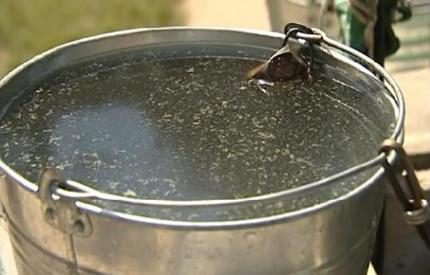
If these symptoms occur, the well must be cleaned immediately.
Otherwise, contamination of the well leads to negative manifestations:
- bottom filter does not cope with its task - muddy water does not brighten;
- the smell of their well shaft is comparable to the “aromas” of a septic tank;
- the surface of the water turned into a persistent oily or rainbow film;
- the static and dynamic fluid level drops markedly.
Such well water cannot be drunk, and it is problematic to do so: its smell and appearance will become an obstacle even in case of intense thirst.
So, measures need to be taken, and this will probably have to be done independently.
If mold deposits and mucus have formed on the walls of the intake source, then cleaning alone is not enough. Must be carried out well disinfection.
What devices can be used
We already talked about how to manually clean a well in an article about muddy water, so today we’ll talk about devices that can facilitate the work of a well cleaner, making it much more efficient.
We apply drainage and pressure pumps
Manual cleaning is good, but it takes a lot of time and effort. If your work is not comparable with the result, it's time to think about automating a number of procedures. For example, you can organize the forced circulation of well fluid, using for this purpose the injection unit and drainage pump.
Each well cleaning pump performs its own function:
- Drainage pump. He will pump water from the well to the surface. Thus, he will not only free the mine from the liquid, but also from the particles of dirt that are dissolved in it.
- Pressure pump. It should be mounted near the head of the well so that it can pump water inside. In fact, his task is to play the role of a scraper.
A dense water stream, which is formed using pressure equipment, will clean not only the walls of the well, but also its bottom. Let us dwell in more detail on the well cleaning procedure using these two types of pumps.
First you need to submerge the drainage pump at the bottom of the well. But how to do this so that the unit does not fall into the sludge? To do this, build a special stand with a wide base.
The pressure hose of the drainage device must be lowered into a container with a capacity of approximately 300 liters. For this purpose, an old barrel or bath that has served its purpose is perfect.
The pressure pump through the suction hose must also be connected to a tank or to a bath into which water will be pumped. The simplest wire filter should be attached to the end of this hose to prevent clogging of the pump and the circulation of fine dirt.
The pressure head hose of the unit is equipped with a hydraulic nozzle, which allows generating a sufficiently dense stream so that it can serve as a scraper.
Preparatory procedures are completed, and you can begin to clean the well. We turn on the drain pump to pump out all the liquid from the well. And then we pump it back under pressure, knocking dirt and deposits from the rings of the mine.
The whole process needs to be repeated several times. The hydraulic nozzle can be manipulated while being near the well stem or standing on the stairs inside the mine itself. In theory, all sludge, sand and other foreign matter should settle at the bottom of the drainage tank.
When the walls of the well are free from dirt and deposits, you can treat their surface with chemicals. For these purposes, use a conventional atomizer, seasoned with a ten percent solution of bleach.
After treatment, the well shaft will need to be washed more than once, until the water stops smelling of bleach.
Another way to use pumps
If you catch on time and the situation in your well has not yet become catastrophic, you can get by with one drainage pump. To clean the well, it is recommended to use the following models of pumps pumping cold water: Gnome, "Trickle", "Fontanel" or "Kid".

The pump must be suspended using a winch or cable at a distance of about 30 cm from the surface of the water. A half-meter hose from the device must be immersed in water. It is used to agitate silt and dirt in the liquid at the bottom. The second hose should be brought out to the place of discharge of dirty water.
About five minutes you whisk the water, then turn on the drain. The appliance should work until the water in the well is clean. It is recommended to clean the pump filter from dirt.
On average, the cleaning process will take about two hours. If during this time the problem is not resolved, other, more effective measures will have to be taken.
Scoop - the most affordable option
This option is perfect for those summer residents who are short of finances, but have a fair amount of free time. A homemade scoop is a simple, but quite effective device that helps get rid of silty deposits at the bottom of the well.
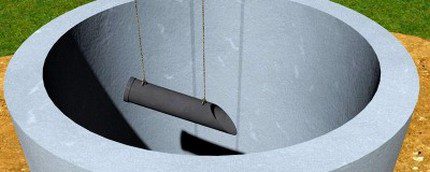
For its manufacture, you will need a 100 mm pipe cut, the length of which will be no more than 2/3 of the diameter of the well shaft. One end of the pipe must be plugged with a removable plug, and the other cut at an angle of 30–35 °.
We place the pipe with the cut up, after which we weld two ears on its edges to its surface. Ears are needed in order to tie two ropes to them as fasteners.
We throw the scoop into the shaft with the tip down so that it sticks into the silt at the bottom of the well. Now you need to pull the rope that is attached closer to the cut.We make sure that the scoop scoops up as much dirt from the bottom as possible.
At one time, you can pull out about 2-3 kg of silty layers. So, repeating this operation many times, you can clean the bottom well. Usually the whole process takes more than one day.
A grab is a more sophisticated tool.
To clean the bottom of the well from accumulations of accumulations on its surface, a grab can be used - a mechanism for a limited range of works.
Outwardly, it resembles jaws, which can close, capturing bottom sediments, and open, freeing themselves from their load on the soil surface. A hand grab is suitable as a tool for cleaning a well. Finding it for sale is not easy, so it’s better to do it yourself.
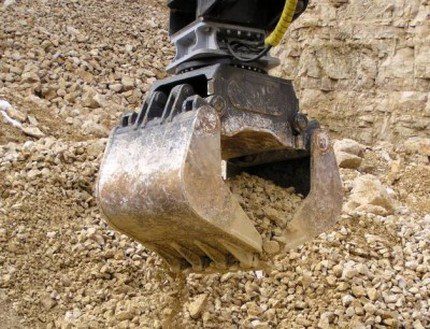
A grab is a bucket that we used to see attached to a lifting device of a crane or excavator. The manual fixture looks about the same, only its weight and size will be less.
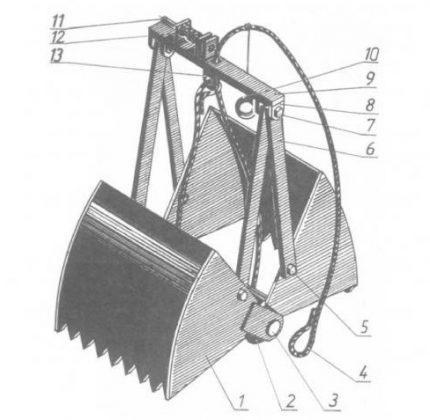
To independently make a grab, we stock up on the following tools and materials:
- Steel sheet. The sheet thickness should not be less than 2 mm, but it is better not to weight the product, because the weight of the bucket together with the load will have to be lifted to the surface.
- Steel tire.
- Steel roller and finger.
- Profile pipe.
- Latch rod.
- Cable or chain. The cable length must be calculated in advance. It should be equal to the two depths of the well with a margin of at least 2 meters.
- Welder and torch or grinder.
So, we take a steel sheet with a thickness of about 2 mm, from which we cut out four semicircular sidewalls, equipped with eyes in full accordance with the dimensions shown in the photograph. We drill holes in the eyes.
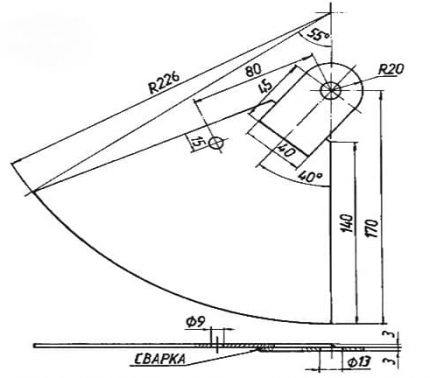
Now you need to cut two half bottoms, one side of which is performed in a straight line, and the other is cut with teeth. The pitch and height of the teeth should be 20-25 mm.
These plates take a semicircular shape corresponding to the radius of the sidewalls. Two sidewalls are welded to each of the midnight bottoms: one on each side. Now we have two half bucket.
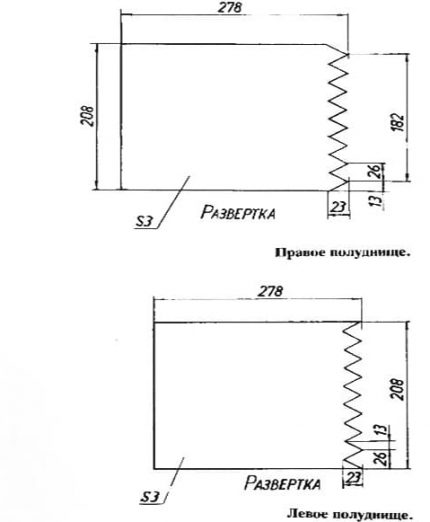
Half-bucket must be interconnected. For these purposes, a steel roller with a diameter of 70 mm and a length of 202 mm is used, having a hole through the entire length into which we insert a finger. All parameters of the roller and finger are clearly visible in the photographs.
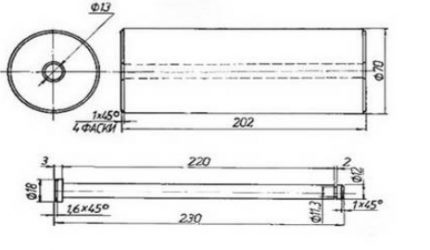
To make traction, we need a steel tire 5-6 mm thick. Look at the photo. It shows the sizes that we need to comply with. According to them, we have to cut the tire. Remember to drill holes.

To make a traverse, we need a profile pipe. For the manufacture of lugs, metal waste left over from our previous work may come in handy. On the traverse, a latch rod is attached. An additional cable of 500 mm length, equipped with a trigger ring, will then be brought to it.
Such a device is used so that the bucket can be locked in the open position.
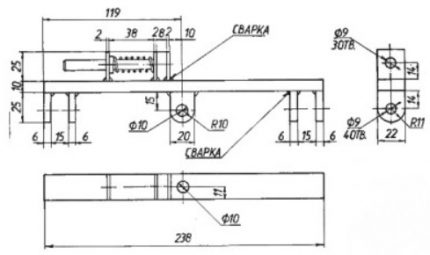
To lower the grab or raise it to the surface, you need a steel cable. It can be replaced with a chain or high-strength rope. The cable length is selected taking into account the depth of the well shaft.
One end of the lifting cable must be secured in the eye, which is located on the traverse. The other end is discharged through the bucket roller, as well as through an opening in the traverse.
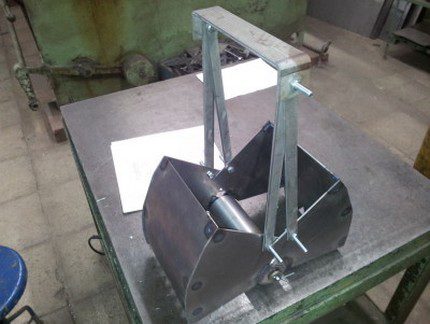
The operation of the grab is a simple matter. Before using it, remove water from the well using a pump or any other method available to you.
The grab itself must be hung on a cable or chain to a well gate. In order to capture the soil, you need to lower the bucket to the bottom of the well. Half-bucket mechanism must be in a diluted state. When they are bred, a latch is cocked, which is fixed with a ring.
The bucket hooked on the ring actually hangs on the rod, which does not allow the spring mechanism to straighten. When a grab hits the bottom, the ring ceases to act on the rod, so the spring pushes it out.
It turns out that nothing holds the “jaws” anymore, and they begin to converge under the influence of their own weight, “biting” silt and dirt. One pass of such a device allows you to remove from the well about a bucket of dirt.
For a larger well, you can build a device and more powerful, but in this case it will be necessary to strengthen the lifting mechanisms. A winch can be used to remove cargo. To transfer the sludge to a specific place immediately after removing it from the mine, build a special boom.
Safety work in the well
Yes, the safety of work in the well is not directly related to the devices that are used in this case. But it is always necessary to remember about it, because your own life and the life of people close to you, who rush to save you, may depend on the measures you have taken in a timely manner.
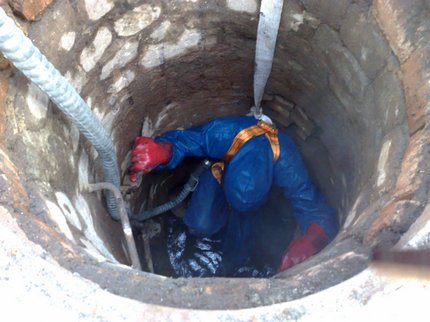
Work inside the well’s shaft is dangerous, so listen to our recommendations and strictly follow them.
Safety precautions:
- Do not clean the well alone. Invite two assistants so that they can insure you if you plan to be in the mine itself.
- Do not neglect special equipment. A helmet will protect your head: being below ground level, you can accidentally get hit on the head with an unsecured object that has fallen from the side of the well. By the way, in the event of such falls, you do not need to cover your head with your hands: just press yourself against the wall of the shaft. It is to the safety belt that the cable should be attached, with the help of which your assistants will be able to pull you out of the well in case of an emergency.
- Watch your well-being. The deeper the well, the harder it is for a cleaner who is near the bottom to breathe. Oxygen deficiency can be felt already at a depth of three meters. Shortness of breath can cause panic or even loss of consciousness. Therefore, those workers who are on the surface of the earth should periodically hail their teammate, immersed in depth, to make sure that he is in order.
- Provide yourself with reliable supports. The bottom of the well does not always form a reliable support for the legs. Therefore, it is better not to stand at the very bottom, but to sit on a platform to distribute the weight of your body over a larger area.
- Do not risk in vain. This item directly relates to the danger that may lie in wait in the well shaft. Often, in such mines, as in basements, an accumulation of combustible or carbon dioxide can form.
Combustible and carbon monoxide is heavier than air, so they can "flow" into the mine and remain in it for a long time. Therefore, when you pumped water out of the mine, lower a bucket with a burning candle into it.
A flashing candle indicates the presence of combustible gas, and an extinct candle indicates the presence of carbon dioxide. In both cases, work in the mine is prohibited.
After cleaning, it is advisable to do well water analysisto ensure its safety for health.
If our recommendations lead you to the conclusion that you cannot handle the problem of cleaning the well yourself, then so be it. Even the large amount spent on paying for the work of specialists is nothing compared to your health, which is priceless.
Video grab manufacturing instructions
How to make a grab from an old gas cylinder and use it in cleaning a well?
To make a grab, you can use an old gas bottle. It is this design in all details and with a list of advantages presented in this video.
Before you start cutting the cylinder, do not forget to make sure that all gas has come out of it. Do not make cuts along the seams of the container or next to them, because it is in these places that the product metal is significantly strengthened. Performing a cut in this place, you will lose much more time and effort.
How to clean a well with a hand grab?
The video shows the process of cleaning the well with a simple hand grab. Since shooting at the bottom of the well is problematic, the operation of capturing the soil is shown on the surface of the earth. The process of extracting a grab from a well and cleaning it from bottom sediments is clearly presented.
There are many ways to clean a well. Devices that will help you in your work are pumps for pumping cold water, grabs or even simple scoops. Some of these devices can be done independently by adopting the recommendations that we have collected for you in this article.
Do you have personal experience in cleaning a well? Want to share effective methods or ask questions about the topic? Please leave comments - the feedback form is located below.

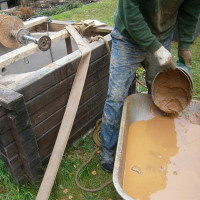 Do-it-yourself well cleaning: a review of the best preventative and capital methods
Do-it-yourself well cleaning: a review of the best preventative and capital methods 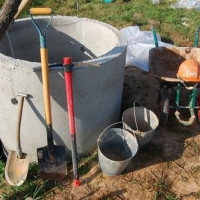 Do-it-yourself deepening of the well: a review of the best methods to get to the aquifer
Do-it-yourself deepening of the well: a review of the best methods to get to the aquifer 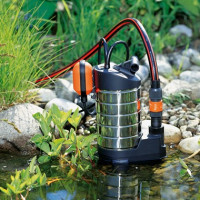 Well cleaning pump: selection criteria and operating rules
Well cleaning pump: selection criteria and operating rules  How to find water for a well: a review of effective aquifer search methods
How to find water for a well: a review of effective aquifer search methods 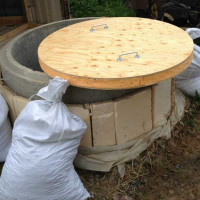 Do-it-yourself well warming for the winter: an overview of the best materials and methods of warming
Do-it-yourself well warming for the winter: an overview of the best materials and methods of warming 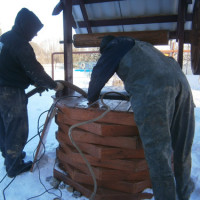 Water purification from a well: an overview of the best and most effective ways
Water purification from a well: an overview of the best and most effective ways  How much does it cost to connect gas to a private house: the price of organizing gas supply
How much does it cost to connect gas to a private house: the price of organizing gas supply  The best washing machines with dryer: model rating and customer tips
The best washing machines with dryer: model rating and customer tips  What is the color temperature of light and the nuances of choosing the temperature of the lamps to suit your needs
What is the color temperature of light and the nuances of choosing the temperature of the lamps to suit your needs  Replacement of a geyser in an apartment: replacement paperwork + basic norms and requirements
Replacement of a geyser in an apartment: replacement paperwork + basic norms and requirements
I clean the old well at the site every two years. Of course I follow the condition of the seams in the well, I look from time to time. I am not a fan of spending extra money and therefore I built the devices for cleaning wells myself from improvised materials. Later I used the compressor. The option of cleaning with a drain pump is not very good, I heard a lot of criticism.
Once every two years? Are there any reasons for this, or just for the sake of prevention? Sometimes people do not look into a well for decades if the quality of the water does not deteriorate. Of course, this probably should not be done either, but your case seems to me too much.
I also have to clean the well, because the first signs of pollution began to appear, but I have been using it for about 5 years now.
In terms of when to clean the well, here everyone decides for himself personally. For some people, brushing once every two years seems quite frequent, but for someone, once in 10 years a lot. Someone does not clean the well for decades, bringing to a critical state.
I can say that the well needs to be cleaned every five years - this is at least. At the expense of a manual grab for cleaning a well - this is a very practical solution. If the rings and seams are in perfect order, then you can clean the bottom of the well without going down into it - this is very convenient. The design is not complicated, so if you have the necessary tools, it is not difficult to make a manual grab yourself.
I think that it would not be superfluous to attach a device diagram of such a grab. Really necessary thing, plus you can clean the ponds on your site.
It is correctly written how much this moment is not delayed, and it is getting closer and closer. Soon I’ll get my well cleaned. I do everything manually, and this is a very laborious and long task. Reading the article, I felt like a primitive man and learned many interesting adaptations from it. There are pumps and an auxiliary tool, but something like a mini grab needs to be done.